A magazine change is a magazine change, right? I mean, there are only so many ways that you can stuff that magazine into the mag well of your auto pistol. But do you know when to do it? Here’s a clue—it might not only be when the slide locks back and the weapon is empty. Today we’ll examine a few instances of when you might want to get that pistol recharged and ready to go. We’re also going to take a look at the tactical reload and the speed reload—two efficient methods of getting that magazine from point A (your mag carrier) to point B (your pistol).
Before we get into the meat ‘n potatoes of the article, I strongly recommend that when you’re training, you dress how you do on the street while carrying. It does no good to use an outside the waistband holster and mag carrier with no cover garment at the range when you wear a cover garment and an IWB holster daily. Train as you will fight.
Since we’re on the subject of magazine changes, it obviously necessitates that we carry a spare magazine. I always advocate carrying at least one spare. Personally, I always carry two spares on the premise that I’ve never talked to anyone who has been in a gunfight who wished he’d been carrying less ammunition.
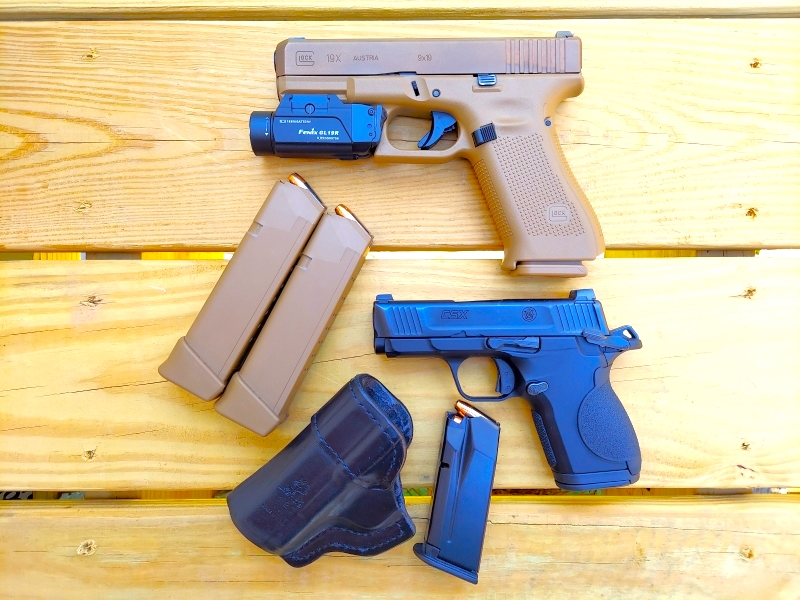
Types of Magazine Changes — Tactical Reload and Speed Reload
There are two basic types of magazine changes that really matter when we are discussing self-defense or combat shooting. I’m a fan of the KISS Principle (Keep It Simple, Stupid).
Tactical Reload
The Tactical Reload occurs when you’ve engaged a target or a hostile and the target has been dealt with. I.e., the target has been properly ventilated. If it’s a bad guy(s) that you were forced to shoot, he is down and appears not to be a threat any longer.
Once the bad guy is neutralized, you scan the area for other bad guys (criminals have an irritating habit of operating in teams). You want to make sure no one is sneaking up on your flanks or your six o’clock. Once you’re satisfied that those areas are clear, you may want to strongly consider getting your pistol back up to full capacity, which is where the Tactical Reload comes in. I learned to scan during a couple of classes that I took wherein the instructor would smack us across the back of the head with a padded bat if we failed to do a scan after engaging targets. It didn’t take long for the sting of negative reinforcement to ingrain the habit of scanning.
While keeping your weapon at eye level in case you have to engage again, your Reaction Side hand (as opposed to your Weapon Hand) goes for your magazine and accesses it. You then bring it up to the weapon, ejecting the partially used magazine and inserting the fresh magazine. You do not want this to take much time at all, minimizing your downtime, because, at this moment, that pistol is your life. A bit later, we’ll cover a very efficient way to facilitate that tactical reload.
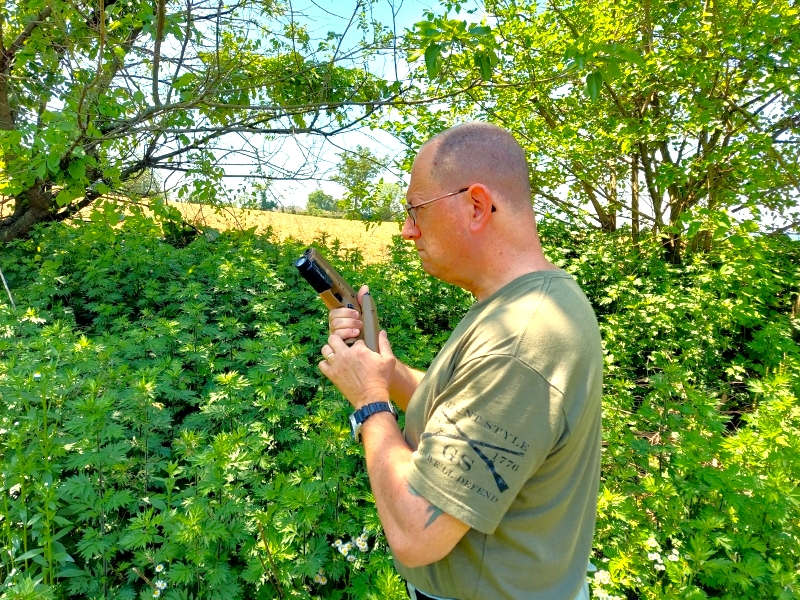
In doing the Tactical Reload, you will not have to rack the slide or hit the slide release because you still have a round in the chamber of the pistol, and it’s all ready to go. I recommend placing the partially expended magazine in a pocket for later use in the event that festivities resume, because you may need that ammo at some point.
Note: I am not advocating placing spent magazines into one’s pocket during a firefight if bullets are still flying! Only save the magazine when you are doing the tactical reload because it is at your leisure and you are not in perceived imminent danger!
Ideally, during the life-or-death engagement we just negotiated, we counted precisely how many rounds we expended and automatically know how many rounds remain in our handgun. In a Perfect World, we did this flawlessly. In Real Life, Mr. Murphy probably is sitting on our shoulder, confusing the hell out of us. Adrenaline tends to mess with our thinking, so it’s quite possible that we lost count in all the excitement of someone trying to stop us from consuming further oxygen. In my years on duty, people have indeed attempted to end my existence, and I can confidently assure you that the adrenaline caused serious time distortions and affected my memory in massive ways.
Taking all this into account, count yourself really fortunate if your slide is not locked back from shooting your pistol dry. Count yourself EXTRA lucky if you have the presence of mind to look at your pistol and think, gosh, the slide is still forward, I’d better get some more ammo into this thing!
Speed Reload, or Emergency Reload
This is the one where you really did keep slapping that trigger until you shot the pistol dry. Hey, don’t feel too badly; it seems that a huge percentage of people who have been in gunfights tend to run the gun dry. Cops, soldiers, citizens, bad guys…lots of folks want to make the threat go away Right Now, if not sooner. So they shoot the living hell out of the target (or try to). Suffice it to say that if you’ve run your weapon to slide lock, you are having a bad day at the office and things are going poorly. You likely have reached what we refer to as TARFU Status (Things Are Really Fouled Up).
All of a sudden, the gun stops shooting, which is often followed by the most oft-used battle cry I’ve ever heard: “Oh, shit!!” No, seriously, every altercation, brawl, riot, disturbance, stabbing, bludgeoning, and ooey-gooey-icky event I’ve ever been involved in seems to have included, at least once, the phrase, “Oh shit!!” Hell, I’ve been the one uttering it a couple of those times. It is the humanoids’ default phrase to indicate that things are going poorly and they are not pleased with the proceedings. Sometimes, it is used to indicate surprise, or perhaps dismay.
So where was I? Oh yeah, you just realized you shot the pistol dry and you’ve pronounced that you are at Condition “Oh, shit.” So how long will that magazine change that you’re about to attempt take? As I’ve heard a few instructors quip, “It could take you the rest of your life.”
The steps are easy. First, access your fresh magazine with your Reaction Side hand and eject the magazine from your pistol with your Weapon hand. You do not, at this point, care where that magazine ends up because it is empty and, at present, of no use to you. Let it land where it wants to.
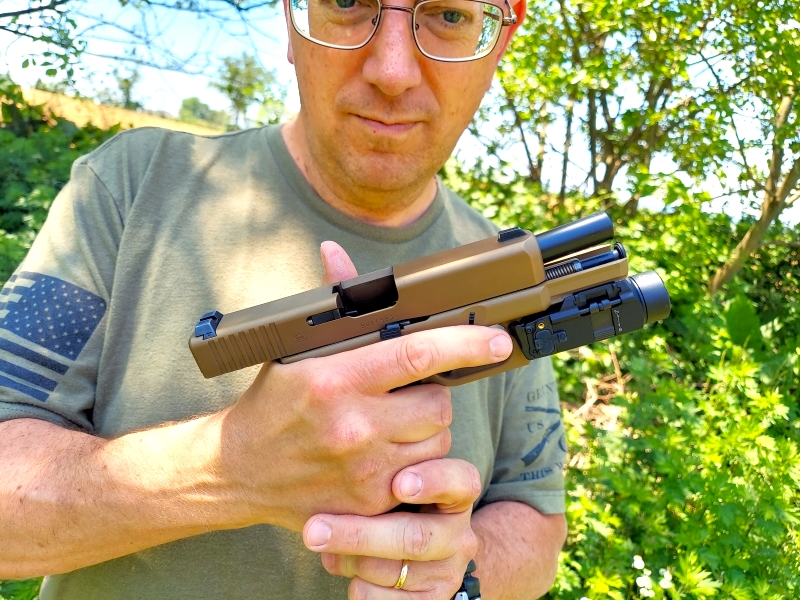
Slam home the full magazine and get the slide closed ASAP. There are two ways to get the slide dropped and chamber a round. You can use the slide release button, which takes some dexterity, which we might not have a lot of due to that adrenaline we discussed earlier. I prefer to grab the top of the slide, which uses gross motor skills, pull it back and let it drop. It’s personal preference and neither way is really wrong.

Handling the Magazines
There is an efficient way to handle the magazine, especially for Tactical Reloads. Grasp the fresh magazine between the index and middle finger of the Reaction Side hand. The base of the magazine will be in your palm while the bullets will be pointed upward if your hand is held horizontally.
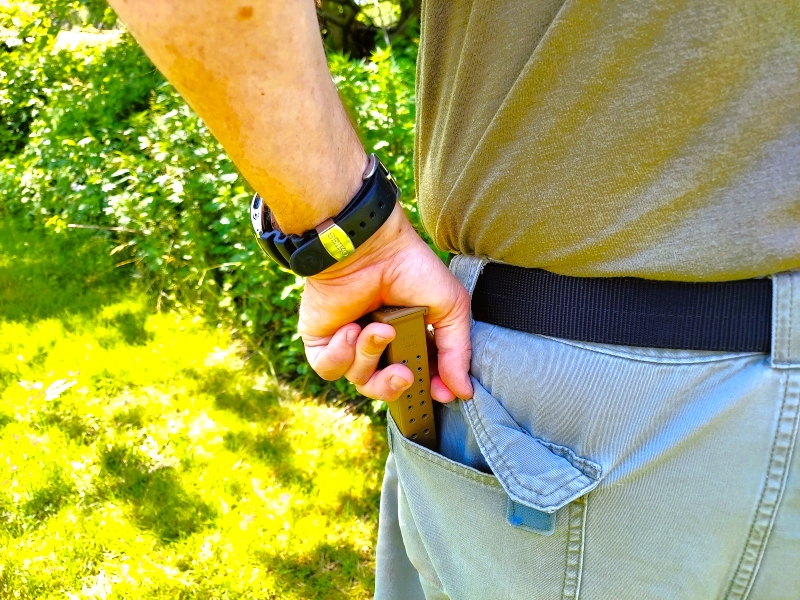
In doing a Tactical Reload, you eject the spent magazine into that same hand and grasp it between the pad of your thumb and the inside of your index finger. For a split second, you have two magazines held in your hand. The full magazine can be inserted into the magazine well of your pistol with a tiny shift of your wrist angle. It takes far longer to explain it here than it does to execute in real life. In real-time, the mag change should take well under one second. If you want to see it done by the best in the world, visit Youtube and type in “Paul Castle Magazine Changes.” He explains it and does it better than anyone on planet earth that I know of.

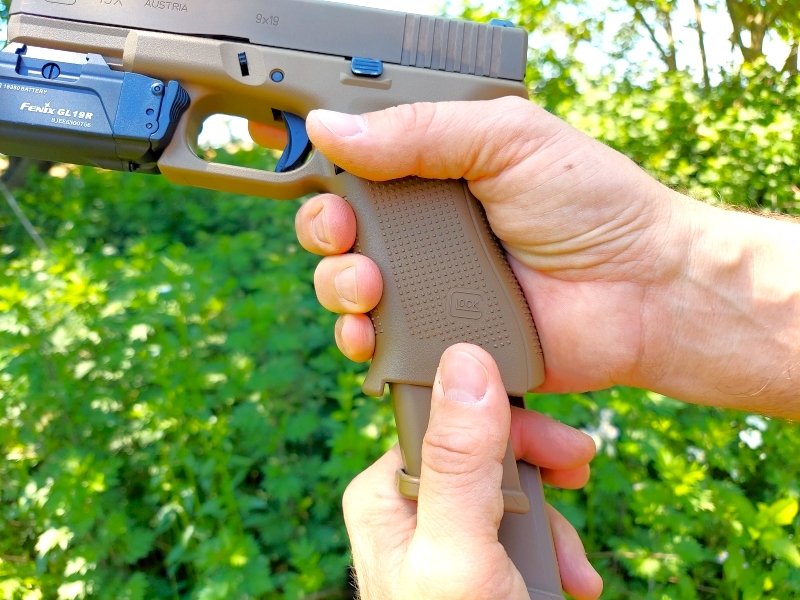
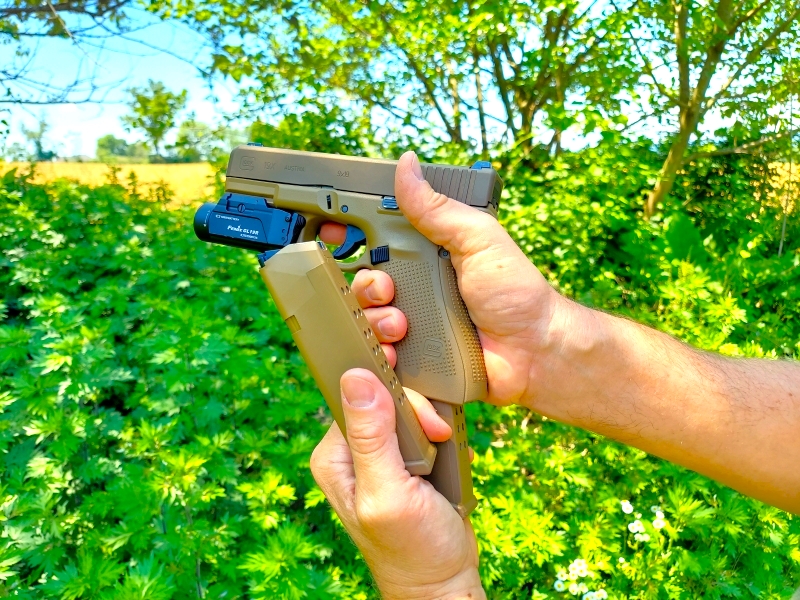
Paul recommends, and I totally agree, holding your pistol in front of your chest in a canted manner. Your support hand feeds the magazine directly into the mag well without having to look at the pistol while you perform the mag change. Some folks advocate holding the pistol in front of your face for mag changes, but I do not. I believe you should be able to do it without looking. Many encounters happen in low light conditions, and you’re probably not going to be able to see your pistol and magazine anyway.
Another point is that, when the weapon is at your center, that is your area of strength. If you are trying to open a stubborn jar, where do you hold it? In front of your face? No, you bring it into your center where you can bring your strength to bear. It is a natural, intuitive bodily movement that we’ve practiced since we were young, so go with it.

This method of grasping the magazine between the index and middle fingers also works for doing a Speed Reload, and I now use it exclusively for all magazine changes because it just works so well and has become completely ingrained.
A word about where to store spare magazines. Personally, I almost always carry my spare magazines in my back pocket. When wearing jeans, the jeans keep them upright and oriented, which makes it very easy to draw them if I need to. No, it’s not at all “tacti-cool” or high-speed, low drag, but it works. It’s one less thing that I have to deal with on my belt. Yes, I have mag carriers that fit on my belt, and I use them from time to time, but I always seem to return to just carrying those spare magazines in my left rear pants pocket. I’m accustomed to it and have never had any issues doing so.
Relax
My best advice? Relax and practice magazine changes until you can do them in your sleep. Get a pack of Snap Caps to use, and never have live ammo present when you are practicing any sort of gun manipulations around the house! If you are practicing Speed Reloads, the Snap Cap (which is a dummy round) will help you be able to drop the slide, because it will take the place of the live round to be chambered.
There’s a good chance that you’ll never be forced to perform a magazine change. On the other hand, why gamble your life on “maybe”? I’d rather be prepared, just in case.


